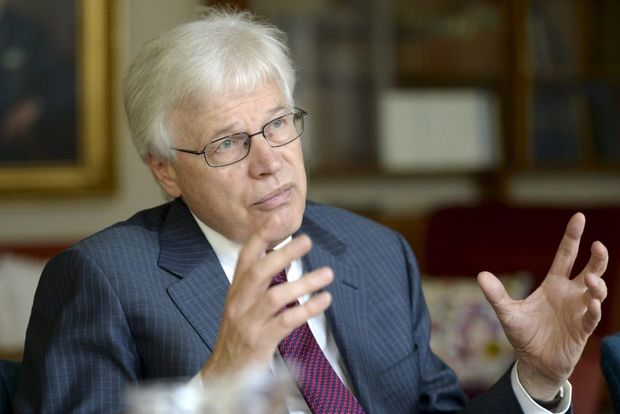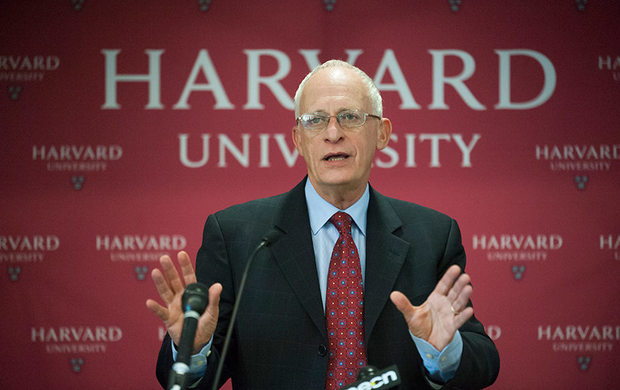Nobel Prize in Economics 2016: let’s conclude right contracts
The Nobel Committee has announced the Nobel Memorial Prize laureates in Economics. This year, the winners of the Nobel Memorial Prize in Economic Sciences are Oliver Hart together with Bengt R. Holmström for their contributions to contract theory. The economy columnist of Realnoe Vremya agrees that they deserve this award, however, the absolute majority 'bet on other horses'.
Totalisator is wrong again
The day before, as usual, the economists made forecasts. The Higher School of Economics finished accepting applications for the contest of forecasts of the Nobel Prize in Economics winner, conducted by the department of Economic Sciences. The economists from 25 cities of the world participated in it. Here is the top-10 by number of mentions:
- Olivier Blanchard
- Paul Romer
- Robert Barro
- Daron Acemoğlu
- Edward Lazear
- Marc Melitz
- James Robinson
- John List
- Greg Mankiw
- Kenneth Rogoff
Most experts thought that the prize would be awarded to macroeconomists. Macroeconomics is topical today due to the global financial crisis and weak growth in many developed countries.
But there also were foreign totalisators. Thomson Reuters has long been practicing forecasting the nominees of the Nobel Prize in Economics. This media Corporation owns the project Web of Science, one of the most comprehensive databases of scientific publications in the world and the corresponding citation index. Their top 3 was following:
- Olivier Blanchard
- Edward Lazear
- Marc Melitz
As you can see, we and abroad forecasted the first place to Olivier Blanchard — senior fellow of the Peterson Institute for International Economics, Washington, D.C., the USA. Chief economist and the head of the research department of the International Monetary Fund (IMF) from 2008 to 8 September 2015. He has made a significant contribution to macroeconomics, including the study of factors determining economic fluctuations and employment. Indeed, he deserves a Nobel Prize. Personally I really like to reread from time to time the clear and sensible tutorial of intermediate level on macroeconomics by Olivier Blanchard.

Last year, the Nobel Prize was awarded to a little-known scientist Angus Deaton. He was awarded the Nobel Memorial Prize in Economic Sciences for his analysis of consumption, poverty, and welfare.
'Didn't they have it already?'
In 2016, the Nobel Prize winners in Economics are Oliver Hart from Harvard and Bengt Holmström from Massachusetts Institute of Technology for their contributions to the contract theory. Oliver Hart and Bengt Holmström will receive 8 million Swedish krona ($931,000). The award ceremony will be held in Stockholm on 10 December, the day of death of Alfred Nobel.
These scientists are not the most popular ones but they are very respected in small scientific circles. Look at the reaction of the Nobel Prize winner in Economics 2008 Paul Krugman: 'Hart and Holmstrom so obviously deserving that my first thought was 'didn't they have it already?'
Also, there was a slight confusion. Konstantin Sonin, a professor at the University of Chicago Harris School of Public Policy, visiting professor at the Higher School of Economics in Moscow, wrote in his blog: 'This is wonderful and right, but not original'. And pointed out that the Nobel Prize winners in Economics Oliver E. Williamson (property rights and structure of firms), Roger Myerson (principal-agent relations) and Eric Maskin (justification of incomplete contracts) have already covered much of this topic. Nevertheless, as Sonin rightly noted: 'Hart and Holmström stand at the origins.'
The first work of Holmström on contract theory appeared in 1979, and is still quoted; some works of Hart, in 1988 and 1990, his book Firms, Contracts, and Financial Structure (Oxford: Oxford University Press) — in 1995. Their works were already known 20 years ago.
Scientific folk received new winners positively in general.
Where is the contact theory applied?
The contract theory, being an integral part of institutional economics, is included in the section of modern economic theory. Any serious textbook on institutional economics has obligatory chapters on theory of contracts.
The contract theory is quite old — the fundamental works on the theory of contracts were developed in the 1970-1980s. The contract theory is based on the same basic assumptions as the neoclassical economic theory, developed in the 1950-1960s (in particular, it assumes the rationality of economic agents and widely uses the economic equilibrium theory and the game theory), but greatly complements it. Because contract theory considers situations when the assumptions of information symmetry, perfection of competition and the completeness of contracts and markets, absence of transaction costs are violated. I.e. contract theory reinforces the position of neoclassical economic paradigm, analyzing the real economic processes and phenomena. In other words, here is not only pure theory but also the developments in real life.
Where is the theory of contracts applied? The theory of contracts can be applied, in particular, in the following theories: regulation of natural monopolies, credit rationing, second degree price discrimination, insurance and financial contracts, auctions, corruption, labor contracts and internal labor markets, the theory of the firm and vertical organizations, etc. As you can see, the range of applications is very diverse. By and large, not only modern economy stand on formal and informal contracts, but also our entire life — relationships between family members, husband and wife, friends. All this is non-contractual relationships that involve rights and responsibilities, and consequences for non-compliance. Here and everywhere the contract theory is applicable!

What is the contract theory?
Contract theory is a part of modern economic theory, studies how economic actors can and do construct contractual arrangements, generally in the presence of asymmetric information. When there is an uneven distribution of information of a product between parties of a transaction. Usually a seller knows more about a product than a buyer, although the reverse situation is also possible.
A contract — voluntarily signed agreement based on mutual promises, the fulfillment of which the parties may be compelled in accordance with the rules of contract law.
The contract theory considers situations close to life: for example, agents have different information, they can compete unfairly, the contracts themselves do not fully describe the relationships of the agents, and their conclusion is a relatively costly procedure. This theory has two aspects. It helps to understand why we see the contracts the way they formed, and determine traps, when the contracts are made not optimally. Besides, it gives moving direction for writing better contracts, for organization of the best public institutions.
Perhaps, the most simple and the most succinct model in the framework of the contract theory is a simple model, called 'principal-agent' or 'superior-subordinate". In this model there are two individuals, each of them has certain interests or preferences. For example, a chief would like a worker did more work, but he wants to pay him less, a worker would like, accordingly, to rest more and to get a high salary. There is a conflict. In such situation the chief faces the problem: how he can create incentives in order a subordinate acted in his own interests?

What can be done in such situation, from the point of view of theory of contracts? If the worker efforts could be controlled, then, again, the problem would not have arisen, despite a conflict of interest. A chief would just have forced a subordinate to do what is in his best interest. However, life is different, in many situations subordinates act in their own discretion, and their actions have significant consequences from the point of view of the chief.
A chief can try to gauge the indicators that give him information about the actions of a subordinate, and depending on these indicators, to reward or to punish a subordinate to a greater or lesser extent. There is a famous theory in the contract theory, which belongs to Bengt Holmström, — the sufficient statistics theory. It suggests that in the classical formulation of the problem with opportunistic subordinates, a chief should take into account all available information, which help him to judge about the actions of a subordinate, and, on the contrary, not to include the factors that are not in the power of a subordinate, because it will impose on him excessive risk and will not help to stimulate his actions. Thus, Holmström created a very developed theory that shows what should not be done — what indicators should not be set, what stimulation is wrong. Thus, reward for work is linked to observable performance indicators. That is, the wage of an employee is paid for the result of his work, not the quantity of effort (hours of work), as it is often accepted. Hence is a system of KPIs (Key Performance Indicators, i.e. indicators of activity of departments or enterprises that help the organization to achieve strategic and tactical goals).
Another important model of the contract theory is incomplete contracts. It is impossible to foresee all possible circumstances and outcomes in a contract. Therefore, this model prescribes optimal conditions for allocation of rights of control between the parties: which party should assume the authority to make decisions in any situation. By and large, the incomplete contracts model is a model of bilateral opportunistic behavior, which has observable but not verifiable variables. For example, the parties see the factors leading to the winning of the partner, but it is impossible to determine their scale, therefore such factors affect the negotiations after the event, but they cannot be included in the contract. An example of a situation: investments in human capital — a company hired an employee and trained him. At the conclusion of the contract of employment the bargaining powers are equal, but at the renegotiation of the contract the bargaining power of the firm decreases because the employee now has more competencies. The basic idea is that a contract that cannot explicitly state what the parties should do in the future, needs to specify not only the unpredictable circumstances but also the particular party that has the right to decide what to do when the parties are unable to agree. For example, there is an arbitrator that is trusted by both sides, which is preferable to the court, because the transaction is not interrupted, it is important to complete it successfully.

The works by Oliver Hart in the mid-1980s on incomplete contracts has shed new light on the essence of the ownership right and owning of businesses, which has seriously affected several sectors of economics, as well as political science and jurisprudence. Due to these studies, economists have revised the assessment tools for questions about what types of companies should participate in the mergers, what the correct ratio of debt to equity is. In some cases, public institutions (schools, prisons, etc.) should be tranferred to the public property or private property.
In general, it is Oliver Hart and Bengt Holmström have laid the foundations of contract theory. Therefore, the Nobel Prize in Economics is quite organic and rightly deserved.